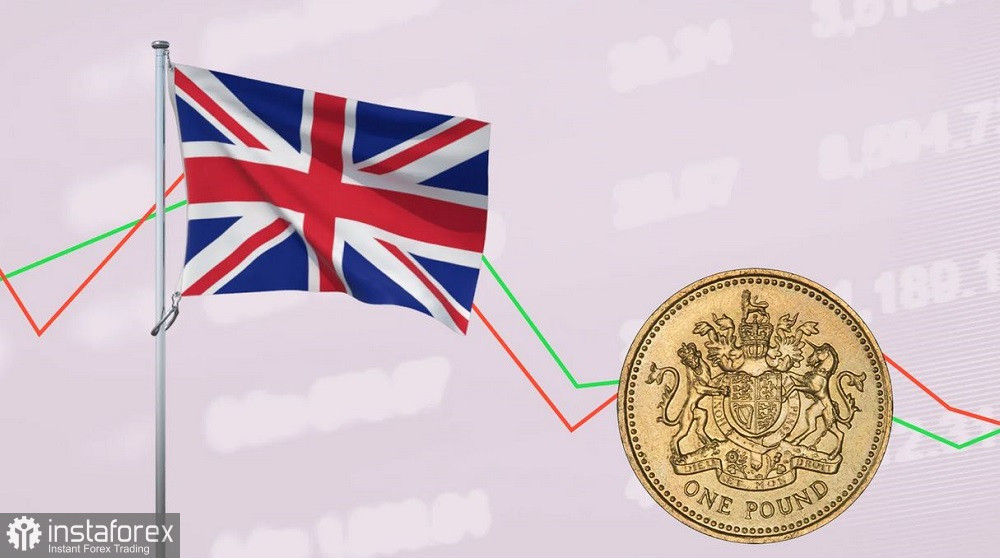Since mid-December, the GBP/USD pair has been demonstrating sideways movement, trading within a formed price corridor. Before the New Year, the corridor boundaries corresponded to the marks of 1.2610 – 1.2780. In January, this range narrowed – the lower threshold rose to 1.2660, while the upper remained at the previous level. The weekly chart of GBP/USD eloquently illustrates the formed sideways. However, releases in the coming days may stir the pair. We will learn data in the field of the UK labor market, the dynamics of British inflation, and retail trade volumes. These reports may exert pressure on the pound or, conversely, pull it out of the flat swamp.
Labor Market
Tomorrow, January 16, a report in the field of the British labor market will be published. According to preliminary forecasts, the release will not favor the pound. Unemployment is expected to remain at the previous level of 4.2% (although some estimates suggest this indicator might rise to 4.4%). The number of jobless claims in December is expected to be around 18,000. If the indicator meets the forecast level, it will reach a peak since April last year.

However, wages, on the contrary, should show a downward trend. According to forecasts, the average earnings, including bonuses, are expected to increase to 6.9%—the lowest figure since April 2023. Moreover, this component of the report has been decreasing for the third consecutive month, and November, apparently, will be the fourth month, indicating an established trend. Excluding bonuses, this indicator is also expected to decline to 6.6% (the lowest since February last year). A similar downward trend is forming here: November will be the third month of the indicator's decline.
Inflation
Wage figures will likely have the most significant impact on GBP/USD, as they will be published a day before the key inflation report. On Wednesday, January 17, we will learn the value of the overall and core CPI for December.
According to most experts, the annual consumer price index is expected to decrease to 3.8%. From July to September (inclusive), this indicator was at 6.7%, but then began to sharply decrease: in October to 4.6%, in November to 3.9%. If, in December, it reaches the forecast level, it will update a two-year low (the lowest value since September 2021). The core consumer price index is also expected to show a downward trend. Recall that in November, it dropped sharply from the October value of 5.7% to 5.1% year-on-year. Forecasts suggest that in December, the core index will be at 4.9% (the weakest growth rate since January 2022). And here, a similar trend has formed: the indicator has been consistently decreasing over four months. December will likely be the fifth month in this sequence.
Another inflation indicator that should complete the overall picture is the Producer Price Index (PPI). In annual terms, the PPI has been slowing down for the third month in a row (for comparison, in August. it was at 9.1%). In December, it is expected to decrease again—this time to 5.1% (the lowest value since September 2021). However, the Producer Price Input Index, according to experts, will not only remain in negative territory (both monthly and annually) but will 'deepen' to -0.6% MoM and -3.0% YoY.
Retail Sales
The marathon of macroeconomic reports will conclude on Friday, January 19, when data in the field of retail sales will be published in the UK. According to forecasts, the volume of retail trade, including fuel costs, will decrease by 0.5% on a monthly basis and increase by 1.1% annually in December. Excluding fuel costs, sales volume is expected to drop by 0.6% MoM. An annual increase of 1.3% is forecasted.
Conclusions
If the aforementioned macroeconomic reports come out at least at the forecast level (not to mention the red zone), the pound will be under significant pressure amid slowing inflation and worsening conditions in the labor market.
However, considering selling GBP/USD is only advisable after the pair leaves the above-mentioned price range—that is, after the bears break through the price barrier at 1.2660 (the Kijun-sen line on the daily chart) and consolidate below this target. In such a case, the pair will be between the middle and lower lines of the Bollinger Bands on D1, and the Ichimoku indicator will form a 'Death Cross' signal, where the Tenkan-sen and Kijun-sen lines will be above the price, and the Kumo cloud—below it. This configuration will indicate a preference for short positions. The target of the downward movement is 1.2530. This mark corresponds to the upper boundary of the Kumo cloud on the daily chart.
 English
English 
 Русский
Русский Bahasa Indonesia
Bahasa Indonesia Bahasa Malay
Bahasa Malay ไทย
ไทย Español
Español Deutsch
Deutsch Български
Български Français
Français Tiếng Việt
Tiếng Việt 中文
中文 বাংলা
বাংলা हिन्दी
हिन्दी Čeština
Čeština Українська
Українська Română
Română

